Italy, Rimini, Grosso Agontano (1250-1385) NGC AU58, Extremely Rare, Aqua Tint

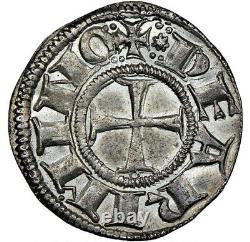
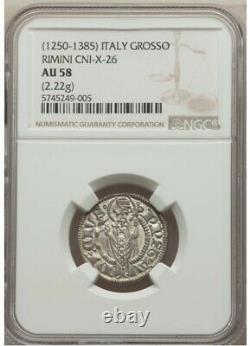
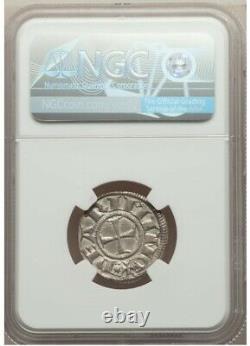
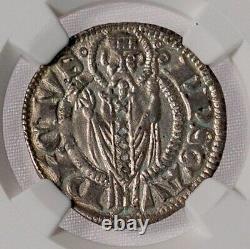
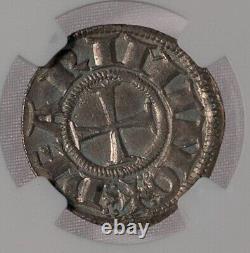
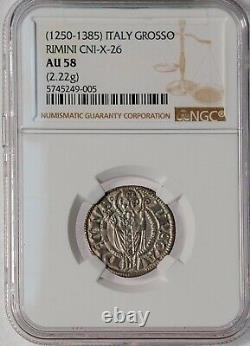

26, Ag 2.22 gm. Reverse legend "DE A RIMINO".
Graded NGC AU58, Census [1/0], total of 1. Extremely rare in this graded condition. Detailed strike, particularly well centered, with much of the original mint luster peeking out from behind devices. Fields display a pleasant aqua tint.Please view our high resolution photos. Foreign buyers please inquire about rates. The Agontano was the currency used by the Italian Maritime Republic of Ancona from the 12th to the 16th centuries during its golden age. It was a large silver coin of 18-22mm in diameter and a weight of 2.04-2.42 grams, of roughly equivalent value to the Milanese Soldo. The first reports of Ancona's medieval coinage begin in the 12th century when the independence of the city grew and it began to mint coinage without Imperial or papal oversight.
According to some traditions the city began minting currency by concession of the Byzantine Empire, following the fidelity demonstrated during the siege of 1173, which also lead to the city's acquisition of its flag of the gold cross on a red field. This story may be doubtful as records for it are late and not supported by contemporary sources. The coin, also called "Grosso Agontano", was a great success and its type was imitated in other cities of Marche and also in Emilia-Romagna, Tuscany, Lazio and Abruzzo. For example, coins of Massa Marittima, Ravenna, Rimini, Volterra, Pesaro and Ferrara show a marked influence from Ancona. Later and less famously Ancona began minting a gold Agnoto coin, also known as the Ancona Ducat. Specimens of this coin have survived from the 15th and 16th centuries, until the city's loss of independence in 1532.On the obverse the Agontano displays a cross enclosed by a circle around which is the inscription DEA RIMINO. On the reverse is represented St. Cyriacus, protector of the city, dressed as a Greek bishop. Around this is the inscription P. The saint's head, with the halo, interrupts the circle that encloses the rest of the body.

